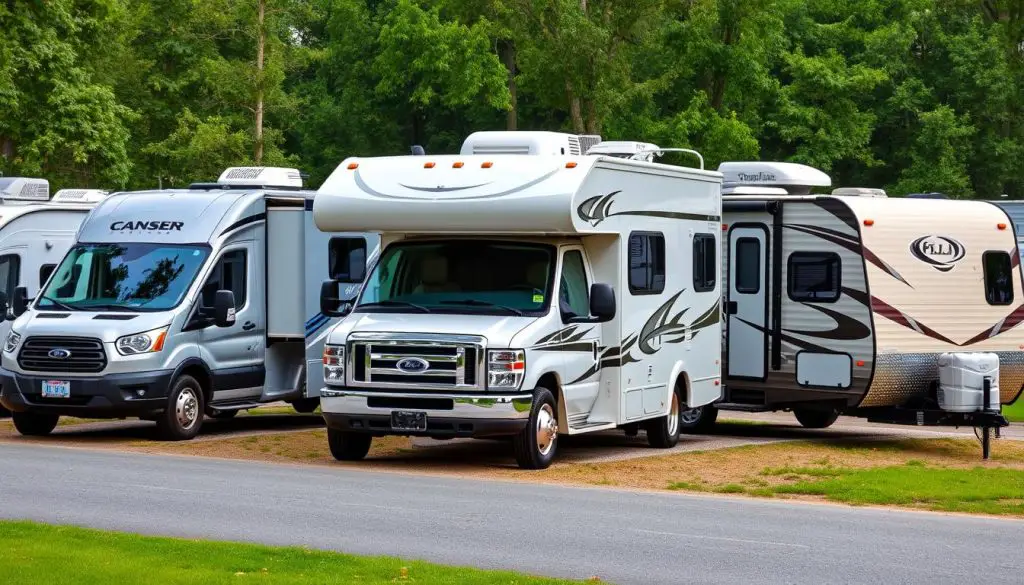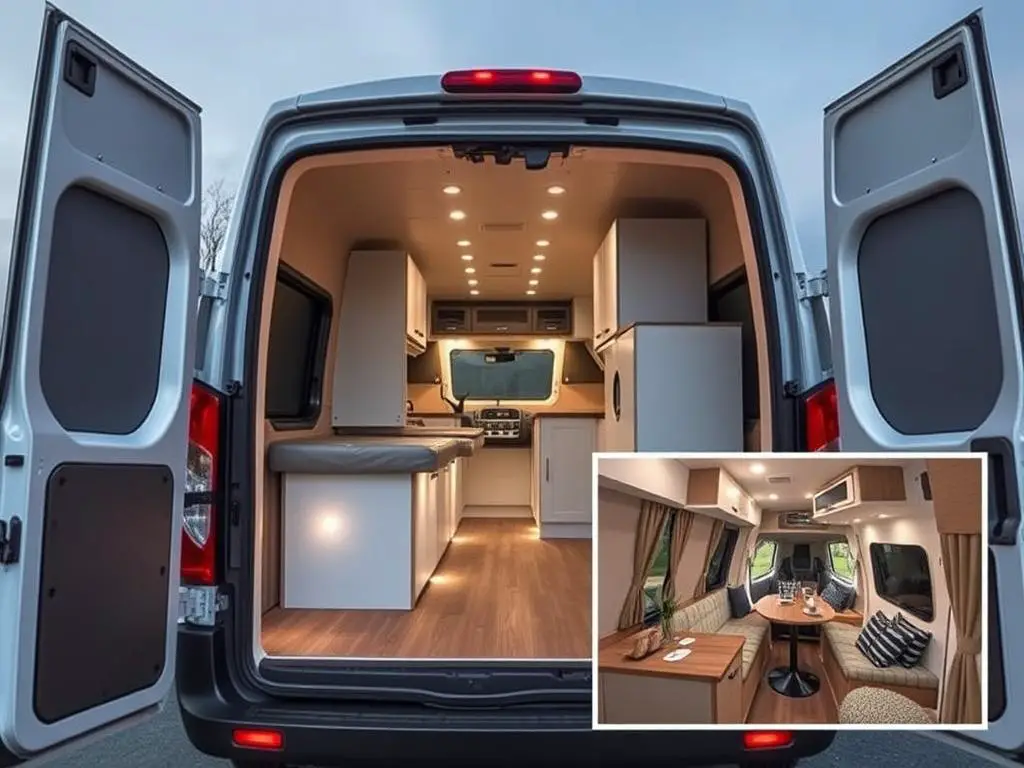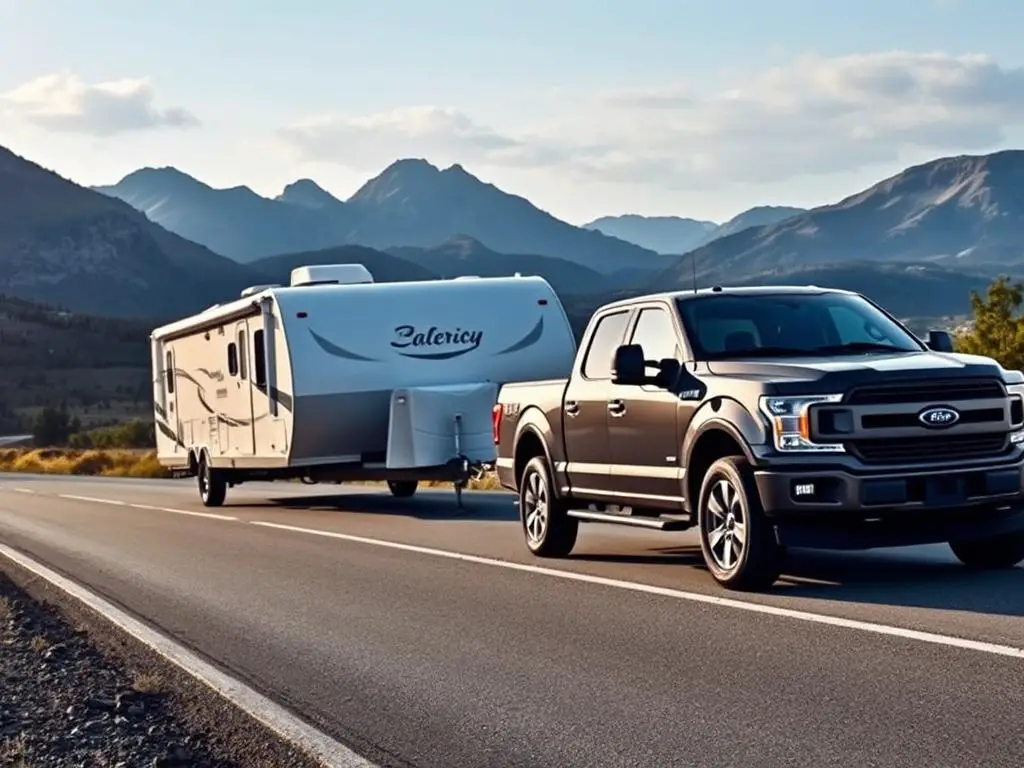Would you like to save this article?
Planning to hit the road in a Class A RV but unsure if your regular driver’s license is enough? You’re not alone. The requirements for driving these large recreational vehicles vary significantly across states, creating confusion for many RV enthusiasts. This comprehensive guide breaks down everything you need to know about Class A RV license requirements, helping you determine whether you need special certification before taking your home-on-wheels for a spin.
What Defines a Class A RV?
Class A motorhomes are the largest RVs on the road, often requiring special licensing in some states
Class A RVs are the largest motorhomes available, built on either a commercial truck chassis, a specially designed motor vehicle chassis, or a commercial bus chassis. These impressive vehicles typically range from 26 to 45 feet in length and can weigh anywhere from 13,000 to 30,000 pounds, depending on the model and features.
Key Characteristics of Class A RVs:
- Length: 26-45 feet (some luxury models exceed 45 feet)
- Weight: 13,000-30,000+ pounds (GVWR)
- Height: 11-13.5 feet tall
- Built on commercial truck or bus chassis
- Flat, vertical front end with large windshield
- Diesel or gas engine options
Common Features:
- Multiple slide-outs for expanded living space
- Full kitchen with residential-size appliances
- Spacious bathroom(s) with shower
- Entertainment systems and luxury amenities
- Generous storage compartments (basement storage)
- Advanced driving and safety systems
The substantial size and weight of Class A motorhomes are the primary factors that may trigger special license requirements. Their dimensions create different driving dynamics compared to passenger vehicles, requiring more skill to maneuver safely on the road.
Standard vs. Special License Requirements
Whether you need a special license to drive a Class A RV depends primarily on two factors: the state where you’re licensed and the weight of your RV. Let’s break down the difference between standard and special license requirements.
Standard Driver’s License
A standard driver’s license (typically Class D or Class C, depending on your state) allows you to:
- Drive passenger vehicles and light-duty trucks
- Operate vehicles under 26,000 pounds GVWR in most states
- Drive smaller RVs like Class B and most Class C motorhomes
- Tow trailers under certain weight limits (varies by state)
Special License Types
Special licenses that may be required for Class A RVs include:
- Non-commercial Class A or B license
- Commercial Driver’s License (CDL)
- Special endorsements (like R, J, or Z endorsements)
- Recreational Vehicle endorsements
Important Note: The “Class A” in “Class A RV” refers to the type of motorhome, not the license classification. A Class A license is a type of driver’s license that may be required to operate certain heavy vehicles, including some Class A RVs.
Weight Thresholds That Trigger Special Licenses
The most common weight threshold that triggers special license requirements is 26,001 pounds (or 26,000+ pounds). This threshold is based on the vehicle’s Gross Vehicle Weight Rating (GVWR), which is the maximum weight a vehicle is designed to safely carry, including the vehicle itself, passengers, fuel, and cargo.
Understanding Weight Ratings
GVWR (Gross Vehicle Weight Rating): The maximum allowable total weight of the vehicle, including the vehicle itself, passengers, fuel, and cargo.
GCWR (Gross Combined Weight Rating): The maximum allowable combined weight of the towing vehicle, the trailer being towed, and their contents.
Many Class A RVs exceed the 26,000-pound threshold, especially luxury models with multiple slide-outs and high-end amenities. If your Class A RV has a GVWR over 26,000 pounds, you’ll likely need some form of special license in states that have such requirements.
| Weight Category | GVWR Range | Typical License Requirement | Applies to Most Class A RVs? |
| Light-Duty | Under 16,000 lbs | Standard driver’s license | No – Most Class A RVs exceed this weight |
| Medium-Duty | 16,001 – 26,000 lbs | Standard license in most states | Yes – Smaller Class A models |
| Heavy-Duty | 26,001+ lbs | Special license in many states | Yes – Larger Class A models |
State-by-State License Requirements for Class A RVs
License requirements for Class A RVs vary significantly from state to state. Here’s a detailed breakdown of requirements in five key states, followed by a summary of how other states handle RV licensing.
California
California has some of the strictest RV license requirements:
- Non-commercial Class B license: Required for any single vehicle with a GVWR of 26,001+ pounds or any vehicle over 40 feet in length
- Non-commercial Class A license: Required for towing vehicles with a GVWR over 10,000 pounds
- Testing: Includes written test, pre-trip inspection, and driving test
- Medical certificate: May be required for certain weight classes
Texas
Texas requires special licensing for heavier RVs:
- Class B non-commercial license: Required for single vehicles with a GVWR of 26,001+ pounds
- Class A non-commercial license: Required for combination vehicles with a GVWR of 26,001+ pounds where the towed vehicle exceeds 10,000 pounds
- Exemption: Recreational vehicles are exempt from CDL requirements regardless of weight
Florida
Florida is more lenient with RV licensing:
- Standard Class E license: Sufficient for all recreational vehicles regardless of weight
- Exemption: Florida specifically exempts recreational vehicles from CDL requirements
- No special endorsements: No additional testing or endorsements needed
New York
New York has specific RV endorsements:
- Class D license with R endorsement: Required for RVs with a GVWR over 26,000 pounds
- Testing: Written test required for the R endorsement
- No CDL needed: Commercial Driver’s License not required for recreational use
Michigan
Michigan has unique requirements:
- Standard license: Sufficient for most RVs
- Recreational Double “R” Endorsement: Only required if towing a fifth wheel plus another trailer (rare configuration)
- No weight-based requirements: No special license needed based solely on RV weight
- Washington D.C. (for RVs over 26,000 lbs)
- Wisconsin (for RVs over 45 feet)
States Requiring CDL
- California
- Hawaii
- Illinois
- Kansas
- Maryland
- Nevada
- New Mexico
- New York
- North Carolina
- Pennsylvania
- South Carolina
- Texas
- Wyoming
States Requiring Non-Commercial Special License
- Alabama
- Alaska
- Arizona
- Colorado
- Delaware
- Florida
- Georgia
- Idaho
- Indiana
- And 24 more states
States With No Special Requirements
Important: License requirements can change. Always verify current requirements with your state’s Department of Motor Vehicles before purchasing or driving a Class A RV.
Air Brake Considerations and Certifications
Many Class A RVs, especially diesel pushers, are equipped with air brakes rather than hydraulic brakes. This air brake system often requires additional certification or endorsement on your license, even in states that don’t otherwise require special licensing for RVs.
What Are Air Brakes?
Air brake systems use compressed air rather than hydraulic fluid to activate the braking mechanism. They’re common in large vehicles like commercial trucks, buses, and larger RVs because they provide more stopping power for heavy vehicles and have built-in safety features.
Air Brake Endorsements
In many states, operating a vehicle with air brakes requires:
- An “L” restriction removal or air brake endorsement
- Passing a specific air brake knowledge test
- Demonstrating ability to inspect and operate air brake systems
- Understanding the unique safety procedures for air brake systems
Testing Requirements
Air brake certification typically involves:
- Written test on air brake system components and operation
- Pre-trip inspection demonstration of air brake components
- Skills test showing proper use of air brakes
- Understanding of air brake safety systems and warning devices
Practical Considerations for New Class A RV Owners
Beyond legal requirements, there are several practical considerations new Class A RV owners should keep in mind:
Insurance Requirements
Insurance companies often have their own requirements for Class A RV operators, which may be stricter than state laws. Some insurers may:
- Require proof of special licensing even if your state doesn’t
- Offer discounts for completing RV driver training courses
- Have different coverage options based on your license type
- Require disclosure of any license restrictions
Professional Training
Even if not legally required, professional RV driver training is highly recommended for new Class A owners. These courses typically cover:
- Basic maneuvering and parking techniques
- Highway driving and lane management
- Understanding turning radius and vehicle dimensions
- Backing up safely with and without a spotter
- Managing steep grades and mountain driving
- Emergency procedures and safety protocols
“Having the legal right to drive a Class A RV doesn’t necessarily mean you have the skills to do it safely. Professional training can make the difference between a stressful journey and an enjoyable adventure.”
Practice Before Your First Trip
Before heading out on your first big adventure:
- Practice in empty parking lots or RV training facilities
- Get comfortable with the vehicle’s dimensions and turning radius
- Practice backing up, both straight back and at angles
- Learn to use your mirrors effectively
- Understand your RV’s blind spots and how to manage them
Alternatives to Class A RVs That Require No Special License
If you’re concerned about special license requirements or simply want an easier driving experience, consider these alternatives to Class A motorhomes:
Class B Motorhomes
- Built on van chassis (Mercedes Sprinter, Ford Transit, etc.)
- Length: 17-23 feet
- Weight: 6,000-8,000 pounds
- No special license required in any state
- Easiest RV type to drive and park
- Limited living space but highly maneuverable
Class C Motorhomes
- Built on truck or van cutaway chassis
- Length: 21-35 feet
- Weight: 10,000-14,000 pounds
- Standard license sufficient in most states
- Recognizable by over-cab sleeping area
- Good balance of living space and drivability
Travel Trailers
- Towed behind a truck or SUV
- Various sizes available (16-40 feet)
- Can detach tow vehicle for local exploration
- Standard license sufficient for most combinations
- More affordable than motorhomes
- Requires learning towing skills
Advantages of Smaller RVs
- No special license requirements
- Lower purchase and maintenance costs
- Better fuel economy
- Easier to drive and park
- Access to more campgrounds and roads
- Simpler systems to learn and maintain
Disadvantages Compared to Class A
- Limited living and storage space
- Fewer luxury amenities available
- Less basement storage
- Typically no washer/dryer options
- Smaller tanks (fresh water, grey, black)
- May feel cramped for full-time living
Steps to Obtain a Special RV License
If you determine that you need a special license for your Class A RV, here’s a general process to follow:
- Contact your state’s DMV to confirm exact requirements and procedures
- Obtain and study the appropriate manual for the license class you need
- Complete any required application forms and pay applicable fees
- Pass a written knowledge test covering rules, regulations, and safety
- Complete a vision test to ensure you meet visual requirements
- Pass a skills test demonstrating your ability to safely operate the RV
- Receive your new license with the appropriate class or endorsements
What to Bring to the DMV
- Current driver’s license
- Proof of identity (passport, birth certificate)
- Proof of residency (utility bills, bank statements)
- Social Security card or number
- Application fee (varies by state)
- Medical certificate (if required by your state)
- Your RV for the skills test (properly registered and insured)
Ready to Get Your Special RV License?
Our RV License Assistance Program helps you navigate the complex requirements in your state. We’ll guide you through the entire process, from application to testing, with expert support every step of the way.
Conclusion: Making the Right Decision for Your RV Journey
Determining whether you need a special license for your Class A RV depends on your state of residence and the specific weight of your vehicle. While many states don’t require special licensing, those with RVs exceeding 26,000 pounds should carefully check their state requirements.
Remember that beyond legal requirements, having the skills to safely operate a large RV is crucial for an enjoyable experience. Consider professional training regardless of licensing requirements, especially if you’re new to RVing or upgrading to a larger vehicle.
If special licensing seems daunting, explore alternatives like Class B or C motorhomes, or travel trailers that can be operated with a standard license while still providing the RV lifestyle you desire.
Whatever path you choose, proper preparation will ensure your RV adventures are safe, legal, and stress-free for years to come.
Start Your RV Journey with Confidence
Whether you need license assistance, professional driving instruction, or help choosing the right RV for your needs, our team of RV experts is here to help.









